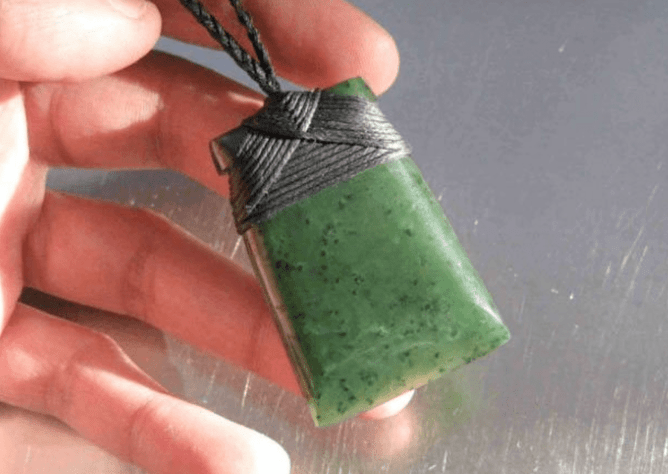Pounamu, also known as greenstone or New Zealand jade, is far more than just a souvenir. It holds deep spiritual and cultural significance for Māori and is considered a taonga (treasure), often passed down through generations.
Found only in the South Island, pounamu is so deeply connected to the land that the island itself was once called Te Wāhi Pounamu (the place of pounamu). Over time, this name evolved into Te Wai Pounamu (the greenstone waters), reflecting the powerful rivers that carry these precious stones down from the mountains.
The Legend of Poutini
Pounamu is protected by Poutini Ngāi Tahu, the guardians of the greenstone found in the rivers of the West Coast. According to legend, Poutini, the guardian taniwha (a supernatural water creature), fell in love with a beautiful Māori woman named Waitaiki. He took her from the North Island and brought her south to the Arahura River, near Hokitika.
Her husband, Tamaahua, pursued them, determined to bring her home. Fearing Tamaahua’s strength, Poutini made a heartbreaking decision. If he could not have Waitaiki, then no one would. He transformed her into pounamu and placed her in the cold waters of the river, where she remains to this day.
The jade fragments that break away and travel downstream are said to be Waitaiki’s children, continuing her journey to the sea.
The Pounamu Pathway – A Cultural Experience in Punakaiki and Greymouth
The Pounamu Pathway offers an immersive journey through Māori history and storytelling. This self-guided experience takes visitors through the legends of Poutini Ngāi Tahu, the warrior chief Tūhuru, and Tuterangiwhānoa, the great landscape carver.
As you explore, you’ll hear ancient stories of travel, conquest, and the sacred trade of pounamu. Wētā Workshop has created a breathtaking large-scale masterpiece that brings these tales to life, making the experience a rich fusion of history, art, and culture.
Finding and Buying Pounamu
For centuries, Māori traveled from across Aotearoa to the West Coast in search of pounamu, using it to craft tools, weapons, and adornments. Today, the stone remains a sought after treasure, admired for its strength, beauty, and cultural value.
Pounamu is found only in a few rivers on the West Coast. There are five main types, each with its own distinctive look:
Kawakawa – deep green, the most common variety
Kahurangi – highly translucent and rare
Inanga – pale green or grey, resembling whitebait
Kōkopu – speckled like the native trout
Tangiwai – the rarest, more glass-like than other pounamu
For those who love exploring, fossicking for pounamu can be an exciting experience. If you're lucky, you might find a piece washed up on the beach. Look for pebbles with a grey, milky outer layer and a smooth, ‘soapy’ feel. However, any pounamu found in rivers or elsewhere cannot be taken, as it belongs to Ngāi Tahu.
Hokitika, The Heart of Jade Country
Hokitika is the pounamu capital of New Zealand, known for its connection to the Arahura River, a key source of greenstone. The town is home to a thriving community of artists and carvers who continue the traditions of pounamu craftsmanship.
Visitors can watch stone artisans at work in local galleries and workshops, learning about the process of shaping raw pounamu into intricate jewellery and sculptures. Some studios even offer hands on carving experiences, allowing you to craft your own meaningful keepsake to take home.
Whether you’re drawn to pounamu for its cultural significance, natural beauty, or spiritual energy, exploring its origins on the West Coast is a journey like no other.

